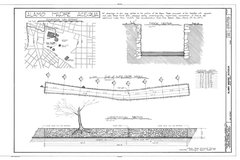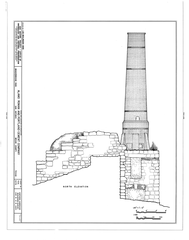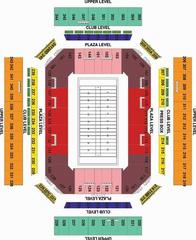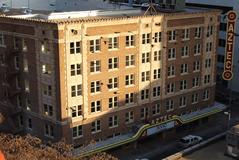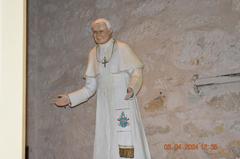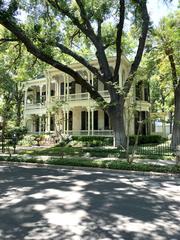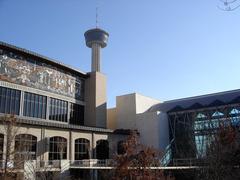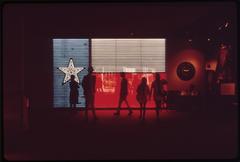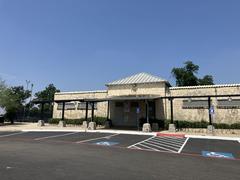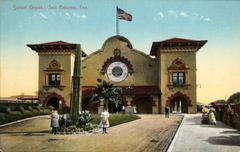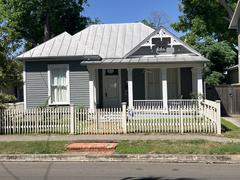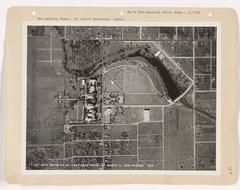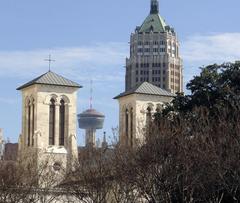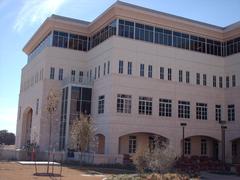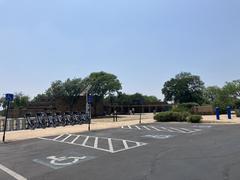Temple Beth-El San Antonio: Visiting Hours, Tickets, and Historical Significance
Date: 15/06/2025
Introduction
Temple Beth-El in San Antonio, Texas, stands as a vibrant testament to over 150 years of Jewish faith, architectural beauty, and civic engagement. Established in 1874, it is the oldest continuously operating synagogue in South Texas and a centerpiece of cultural life in the region. Temple Beth-El’s legacy is interwoven with the story of San Antonio itself, reflecting the city’s multicultural heritage and spirit of resilience. Whether you are a history buff, an architecture enthusiast, or a traveler seeking meaningful cultural experiences, Temple Beth-El offers a rich and welcoming destination.
Visitor Information: Hours, Tickets, Tours, and Accessibility
Visiting Hours
- Monday – Friday: 9:00 AM – 5:00 PM
- Shabbat Services: Friday evenings and Saturday mornings
- Special Events and Holidays: Schedules may vary; always check the official Temple Beth-El website before your visit.
Tickets and Admission
- General Admission: Free for individual and self-guided visits.
- Guided Tours: Available by appointment; donations are appreciated and help support preservation and community initiatives.
- Special Events: Some programs (e.g., High Holy Days, galas, community Seders) may require advance registration or tickets.
Accessibility
- Wheelchair Access: All public spaces are wheelchair accessible, with ramps and elevators.
- Parking: Ample on-site parking; arrive early during holidays or large events.
- Public Transit: The synagogue is accessible via downtown San Antonio’s transit systems.
Contact and Booking
- Address: 211 Belknap Place, San Antonio, TX 78212 (Google Maps)
- Phone: (210) 733-9135
- Contact Form: Temple Beth-El Contact
- Event Calendar: Temple Beth-El Calendar
Guided and Self-Guided Tours
Temple Beth-El welcomes visitors to explore its storied sanctuary, social halls, and educational spaces. Guided tours, led by knowledgeable docents, offer in-depth insights into the synagogue’s history, architecture, and contributions to San Antonio’s civic life. Self-guided visits are possible during general open hours, with informative brochures available at the entrance.
Tips:
- Dress modestly; kippot are provided for men.
- Photography is permitted in public areas but restricted during services and in the sanctuary without prior approval.
- For group tours or educational visits, schedule in advance via the administrative office.
Architectural and Artistic Highlights
Temple Beth-El’s 1927 Mediterranean Revival building is a striking architectural gem, featuring:
- Red-tiled Roof and Central Dome: The dome, restored with Ludowici tiles, is a city landmark.
- Sanctuary: Soaring ceilings, intricate woodwork, and stained-glass windows depicting Jewish history.
- Dreeben Family Pavilion: Added in 2003, this space connects the sanctuary and auditorium, featuring limestone reminiscent of Jerusalem’s Western Wall and symbolic glass art (Marmon Mok).
- Art and Judaica: The synagogue houses ceremonial objects, Torah mantles, and memorial installations.
Historical Overview: Founding, Growth, and Community Role
Early Years (1870–1902)
Temple Beth-El’s origins date to 1870, with formal establishment in 1874 by leading Jewish settlers such as Abraham Frank and the Oppenheimer brothers. The congregation’s first building was a modest structure at Jefferson and Travis Streets, laying the foundation for South Texas Jewish life (JMAW).
Expansion and Architectural Evolution (1902–1927)
A second, classically inspired building was erected in 1902, designed by Harvey L. Page (Synagogues of the South). By 1927, the congregation moved to its current Mediterranean Revival building in the Monte Vista neighborhood, reflecting both regional influences and the community’s growing prominence (SAH Archipedia).
Rabbinic Leadership and Social Impact
Temple Beth-El is distinguished by remarkable rabbinic continuity and leadership in civic life. Notable leaders include Rabbi Samuel Marks, Rabbi Ephriam Frisch, Rabbi David Jacobson, and Rabbi Samuel Stahl, who expanded the congregation’s reach and inclusivity. Since 2014, Rabbi Mara Nathan—San Antonio’s first female Senior Rabbi—has led a diverse clergy team, underscoring Temple Beth-El’s commitment to progressive values (San Antonio Report).
Cultural and Social Significance
Temple Beth-El is a hub for interfaith collaboration, social justice, and community service. Partnerships with organizations like the San Antonio Food Bank and outreach through educational programs embody its dedication to tikkun olam (“repairing the world”). The congregation is inclusive, welcoming nearly 900 families from all backgrounds.
Special Events and Festivals
Temple Beth-El’s calendar is filled with engaging events:
- High Holy Days: Rosh Hashanah and Yom Kippur services (advance registration for non-members).
- Hanukkah Celebrations: Public menorah lightings and musical performances.
- Purim Carnival: Family-friendly festivities with costumes and traditional foods.
- Passover Seders: Community Seders open to non-Jewish visitors.
- Public Programs: Lectures, concerts, interfaith dialogues, and the annual Luminaria arts festival (San Antonio Events).
Community Engagement & Educational Opportunities
- Religious School: Robust education for children and adults.
- Guest Lectures & Panels: Covering Jewish history, ethics, and interfaith topics.
- Docent-Led Tours: Available for schools and community groups by appointment.
Worship Experience
Visitors are welcome at services—primarily in English, with Hebrew prayers and music. The congregation’s musical tradition features a choir, organ, and frequent guest musicians. After services, join the community for Oneg Shabbat (refreshments and fellowship).
Visitor Etiquette & Tips
- Dress Code: Modest attire; kippot offered.
- Photography: Allowed in public areas, but restricted during services or in the sanctuary.
- Security: Bag checks and sign-in at the entrance are standard.
- Behavior: Silence mobile devices and respect ongoing services.
Nearby Attractions
Temple Beth-El’s central location makes it easy to combine your visit with other San Antonio highlights:
- The Alamo
- San Antonio River Walk
- San Fernando Cathedral
- San Antonio Museum of Art
- Pearl District
The Monte Vista district itself is known for historic homes and walkable, tree-lined streets—perfect for exploration before or after your visit (Wolters World).
Frequently Asked Questions
Q: What are Temple Beth-El’s visiting hours?
A: Monday–Friday, 9:00 AM–5:00 PM. Shabbat services on Friday evenings and Saturday mornings. Check the official website for updates.
Q: Is there an admission fee?
A: No, admission is free; donations are appreciated.
Q: Are guided tours available?
A: Yes, by appointment via the administrative office or website.
Q: Is Temple Beth-El wheelchair accessible?
A: Yes, including ramps, elevators, and accessible restrooms.
Q: Can I take photographs inside?
A: In public areas, yes; in the sanctuary or during services, only with prior approval.
Q: Are children welcome?
A: Absolutely; many events and festivals are family-friendly.
Visual Media & Interactive Resources
Explore images and virtual tours of Temple Beth-El’s sanctuary, dome, and pavilions on the official website. Maps and virtual guides are available for a richer visitor experience.
Plan Your Visit and Stay Connected
- Temple Beth-El Official Website
- Event Calendar
- Contact and Booking
- Download the Audiala app for guided tours and the latest updates.
- Follow Temple Beth-El on social media for news and upcoming programs.
Summary and Recommendations
Temple Beth-El is a cornerstone of San Antonio’s history, faith, and culture. Its stunning architecture, active community, and commitment to inclusivity and social justice make it an essential stop for any visitor. To get the most from your experience:
- Check for current hours and event schedules before visiting.
- Book guided tours in advance for a deeper understanding.
- Download the Audiala app for interactive content.
- Explore nearby attractions to enrich your cultural itinerary.
Temple Beth-El is more than a historical site—it is a living community, continuously adapting and contributing to the city’s vibrant tapestry. Discover its enduring legacy and join in its ongoing story.
References
- Jewish Museum of the American West: Temple Beth-El Jewish San Antonio, 2024
- Society of Architectural Historians Archipedia: Temple Beth-El San Antonio, 2024
- San Antonio Report: Temple Beth-El Marks 150 Years with Gala Celebration, 2024
- Synagogues of the South
- Marmon Mok – Temple Beth-El Renovation & Dreeben Pavilion
- Wikipedia: Temple Beth-El (San Antonio)
- Wolters World – Tips for Visiting San Antonio
- San Antonio Events – June

